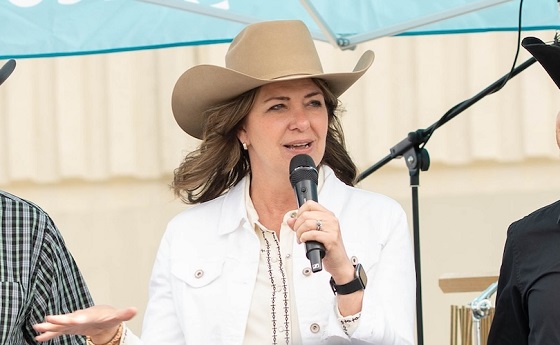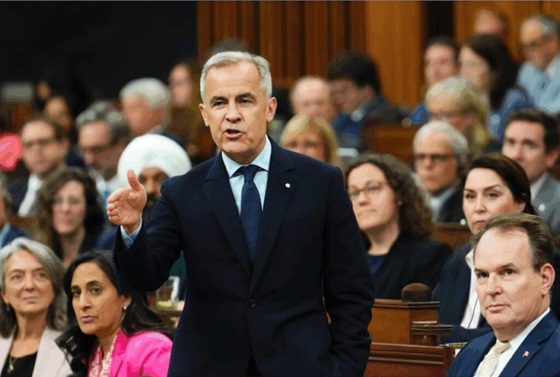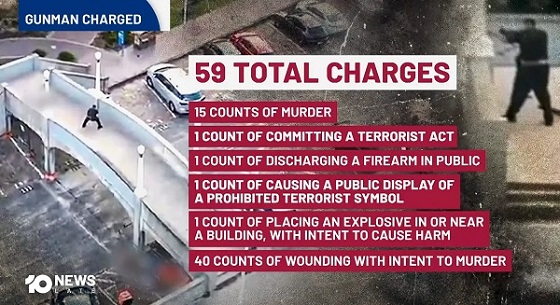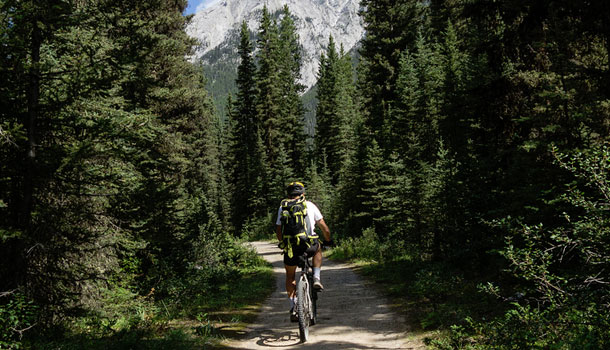Alberta
LISTEN: My date with self-isolation amid the Covid 19 scare – J’Lyn Nye Interview

I was happy to join J’Lyn Nye today on 630 CHED to discuss this. Here is a link to the interview.
It’s funny how these things go. I don’t buy lottery tickets so it’s only fitting that I would be one of the 4.5 million Albertans who may have come into contact with one of Alberta’s now 14 confirmed cases of Covid 19 (Coronavirus Disease). You can do the math if you’re an oddsmaker, but the odds are improving that you too will come into contact with this virus.
It started with a phone call late yesterday afternoon (March 9th) from a nurse in the contagious disease unit at AHS. She informed me that a person who had tested positive for the virus had been at a place of business in Leduc at the same time I had been there for an appointment.
After asking a number of questions about how I was feeling, she told me that they’d like me to “self-isolate” for 14 days. During that time, I should take my temperature twice a day and if I develop any symptoms, to call and they’d arrange for a test. There really is no treatment at this point as a vaccine is yet to be developed and will likely be another 12-18 months away from widespread use.
So here I sit. Do I self-isolate? Do I go about my business? I’m a healthy guy. I’ve only had the flu once in my lifetime that I can remember, so what are the chances that I might test positive for this? Again, I’m not an oddsmaker, and certainly not a doctor. In fact, it’s not like the flu at all so that’s a useless comparison. The chances are probably slim. So I look at my calendar. Reality is that I’m lucky. I operate a digital media platform and literally 100% of my work can be done online if needed. I work from home 80% of the time, leaving the house for various business appointments and social events. Luckily my calendar is light with nothing that can’t be moved or dealt with online.
There is one niggly thing though. A recording session this coming Sunday with a band I sometimes play guitar with in Central Alberta. By Sunday, I should be virtually good to go, that being day 12 after my potential contact. It took a lot of schedule bashing to pull everyone together to do this session. Maybe I should just risk it and not tell anyone. And then I think about that … none of my bandmates are getting any younger, in fact, if I’m facing reality, we’re probably all in that age sweet spot where we’re most-susceptible.
Ok, decision made. Postpone the session. Schedule is now clear except for a couple of sundry tasks that can be accomplished with limited help from some friends.
But … then I think about if I worked at a job where I don’t get paid unless I show up to work. Maybe I’m a contractor. Maybe I have a family and am the sole income earner, or I’m a single parent working two part time jobs. I’m not sure I would make the same decision. I mean, seriously, I feel fine. Not even a sniffle. Would I stay home? Or go make some money to pay my monthend bills? I’m happy I don’t have to make that decision.
“… Another thing I’ve thought quite a bit about is toilet paper…”
I’ve now had 18 hours to process all of this and think it through. I must admit, I’ve never really thought that much about how a disease spreads, other than notionally knowing it happens through various forms of contact, and I think is more prone to spread in certain environments; heavily populated, warm, humid conditions, etc. A scientist I am not.
My date with self-isolation has given me a very real opportunity to reflect on my own travels and interactions since having potentially being exposed to the virus eight days ago. With this newfound time in my schedule, I’ve had a chance to think this through. Since yesterday afternoon, I’ve taken myself out of circulation. I have eliminated my risk to others. With luck I won’t test positive, and everyone in my circle will be spared from self-isolation. I will pull out a guitar and work on the material for the session we postponed. Overall, I’m starting to feel pretty good about my decision.
“…I wonder, can our system possibly get on top of this? It feels like a hopeless task, yet we have to try, right?…”
But what if, just what if, I become Positive Confirmation #8 in the province? Suddenly, everyone I’ve been around since March 3rd becomes of interest. Is Arnie at risk? I attended the Power of Success show last Thursday in Edmonton with Arnold Schwarzenegger and Friends. Lucky for them I couldn’t afford the Platinum ticket that would have given me the opportunity shake Arnie’s hand and get my picture taken with the man himself. I’d certainly have been within 2 meters, and I know we would have had a proper and firm handshake.
“…There will no doubt be businesses that close as a result of this- some for good…”
Oh. Something else … the long-term care home I where I visited my Dad and his wife this past Sunday? That could get messy, considering I also spent time with his doctor, one of the few in the area.
Or the auto repair shop I limped my sick car to yesterday morning after taking out both rims on the right side Sunday when I tangled with one of the ridiculously large and dangerous potholes at 110 kph on Highway 43. (That’s a whole other rant!)
The list goes on. As I think of the permutations and potential for chaos, it’s sobering. How quickly this can spread here is yet to be seen. It doesn’t spread through the air like measles, but it does spread through contact, or droplets generated by a sneeze or cough, and can live on surfaces we touch. Washing hands and cleaning surfaces is critical to helping stop the spread, and that’s just basic common sense anyway.
“However, it can spread person to person by larger droplets, like from a cough or sneeze, or by touching contaminated objects, then touching your eyes, nose or mouth,” says Dr. Deena Hinshaw, Alberta’s chief medical officer of health.
I wonder, can our system possibly get on top of this? It feels like a hopeless task, yet we have to try, right? Maybe geting on top of it isn’t possible. But can we slow the spread with a precaution like I’m being asked to take? Yes we can. But what else has to happen if we’re to make the mitigation effort as effective as possible?
There will no doubt be businesses that close as a result of this- some for good. Think about it. If I go for a coffee everyday at my favourite coffee shop, but because my employer has asked us all to work from home, that coffee shop owner is going to miss out on my $3 bucks a day. And let’s say that happens for 2 weeks. That’s ten cups of coffee, or $30 dollars. I’m not going to go in on the first day back and buy ten cups of coffee. No, I’ll buy one. That money is lost. Multiply that by 100 customers a day and the numbers can add up to a point where many small businesses can’t survive.
There needs to be programs to help them recover. Maybe there are already. What about for the wage earner who has to take time off work to self isolate and make the community safer for everyone else. Is there a program to help them reover their lost wages? How long will that take to put money back in their wallets should they make the sacrifice for the safety of the community? If we’re serious about mitigation, we will need to really think about how to deal with the downstream consequences.
This isn’t survival of the fittest. We need those employers and their employees to get through this and be there when this passes, or we’ll be in even worse shape.
Another thing I’ve thought quite a bit about is toilet paper.
Although this is a new virus and research is only starting to be evaluated, it appears to affect respiratory function more so than gastronomic function, though again, it’s pretty early to know for sure. But best I can tell, there is no way that I need to have a year’s supply of toilet paper on hand. I can see having more than normal, just in case things get out of hand. But to be hoarding it for some weird survivalistic reason, especially against a backdrop of short-term supply shortages exacerbated by recent rail blockages seems … well, just completely irrational to me. Settle down, there’s more coming! And hey, if you’re sick enough to go through that much toilet paper, there may be even more wrong with you and you’ll probably be in a hospital. Show a little kindness for the butts of your neighbours. Like that old joke “…Dick’s a hoarder. Don’t be a Dick…”
Seriously, take a moment and give this a bit of thought. This can change pretty fast, like it did for me. A phone call. And then you don’t go out again for up to 14 days. So think in terms of a 3 week supply of things you’ll need. If you’re alone and have nobody to help you, then you’ll need to be even more diligent in planning.
I’ll let you know how it goes. Hopefully I’ll see you in a couple of weeks!
Here is a link with helpful tips that will help you make an appropriate plan.
From the Government of Canada:
If COVID-19 becomes common in your community, you will want to have thought about how to change your behaviours and routines to reduce the risk of infection.
Your plan should include how you can change your regular habits to reduce your exposure to crowded places. For example, you may:
- do your grocery shopping at off-peak hours
- commute by public transit outside of the busy rush hour
- opt to exercise outdoors instead of in an indoor fitness class
Your plan should also include what you will do if you become sick. If you are a caregiver of children or other dependents, you will want to have thought ahead to engage backup caregivers.
You should also think about what you will do if a member of your family becomes sick and needs care. Talk to your employer about working from home if you are needed to care for a family member at home. If you, yourself, become ill, stay home until you are no longer showing symptoms. Employers should not require a sick leave note as that will put added pressure on limited health care services.
Your plan should include shopping for supplies that you should have on hand at all times. This will ensure you do not need to leave your home while you are sick or busy caring for an ill family member.
Your plan should build on the kits you have prepared for other potential emergencies. For more information on how to prepare yourself and your family in the event of an emergency, please visit getprepared.ca.
Read more on Todayville Edmonton.
This article was originally published on March 10, 2020.
Alberta
Housing in Calgary and Edmonton remains expensive but more affordable than other cities

From the Fraser Institute
By Tegan Hill and Austin Thompson
In cities across the country, modest homes have become unaffordable for typical families. Calgary and Edmonton have not been immune to this trend, but they’ve weathered it better than most—largely by making it easier to build homes.
Specifically, faster permit approvals, lower municipal fees and fewer restrictions on homebuilders have helped both cities maintain an affordability edge in an era of runaway prices. To preserve that edge, they must stick with—and strengthen—their pro-growth approach.
First, the bad news. Buying a home remains a formidable challenge for many families in Calgary and Edmonton.
For example, in 2023 (the latest year of available data), a typical family earning the local median after-tax income—$73,420 in Calgary and $70,650 in Edmonton—had to save the equivalent of 17.5 months of income in Calgary ($107,300) or 12.5 months in Edmonton ($73,820) for a 20 per cent down payment on a typical home (single-detached house, semi-detached unit or condominium).
Even after managing such a substantial down payment, the financial strain would continue. Mortgage payments on the remaining 80 per cent of the home’s price would have required a large—and financially risky—share of the family’s after-tax income: 45.1 per cent in Calgary (about $2,757 per month) and 32.2 per cent in Edmonton (about $1,897 per month).
Clearly, unless the typical family already owns property or receives help from family, buying a typical home is extremely challenging. And yet, housing in Calgary and Edmonton remains far more affordable than in most other Canadian cities.
In 2023, out of 36 major Canadian cities, Edmonton and Calgary ranked 8th and 14th, respectively, for housing affordability (relative to the median after-tax family income). That’s a marked improvement from a decade earlier in 2014 when Edmonton ranked 20th and Calgary ranked 30th. And from 2014 to 2023, Edmonton was one of only four Canadian cities where median after-tax family income grew faster than the price of a typical home (in Calgary, home prices rose faster than incomes but by much less than in most Canadian cities). As a result, in 2023 typical homes in Edmonton cost about half as much (again, relative to the local median after-tax family income) as in mid-sized cities such as Windsor and Kelowna—and roughly one-third as much as in Toronto and Vancouver.
To be clear, much of Calgary and Edmonton’s improved rank in affordability is due to other cities becoming less and less affordable. Indeed, mortgage payments (as a share of local after-tax median income) also increased since 2014 in both Calgary and Edmonton.
But the relative success of Alberta’s two largest cities shows what’s possible when you prioritize homebuilding. Their approach—lower municipal fees, faster permit approvals and fewer building restrictions—has made it easier to build homes and helped contain costs for homebuyers. In fact, homebuilding has been accelerating in Calgary and Edmonton, in contrast to a sharp contraction in Vancouver and Toronto. That’s a boon to Albertans who’ve been spared the worst excesses of the national housing crisis. It’s also a demographic and economic boost for the province as residents from across Canada move to Alberta to take advantage of the housing market—in stark contrast to the experience of British Columbia and Ontario, which are hemorrhaging residents.
Alberta’s big cities have shown that when governments let homebuilders build, families benefit. To keep that advantage, policymakers in Calgary and Edmonton must stay the course.
Alberta
Danielle Smith slams Skate Canada for stopping events in Alberta over ban on men in women’s sports

From LifeSiteNews
The Alberta premier has denounced Skate Canada as ‘disgraceful’ for refusing to host events in the province because of a ban on ‘transgender’ men in women’s sports.
Alberta Premier Danielle Smith has demanded an apology after Skate Canada refused to continue holding events in Alberta.
In a December 16 post on X, Smith denounced Skate Canada’s recent decision to stop holding competitions in Alberta due to a provincial law keeping gender-confused men from competing in women’s sports.
“Women and girls have the right to play competitive sports in a safe and fair environment against other biological females,” Smith declared. “This view is held by a vast majority of Albertans and Canadians. It is also common sense and common decency.”
Women and girls have the right to play competitive sports in a safe and fair environment against other biological females.
This view is held by a vast majority of Albertans and Canadians. It is also common sense and common decency.
Skate Canada‘s refusal to hold events in… pic.twitter.com/n4vbkTx6B0
— Danielle Smith (@ABDanielleSmith) December 16, 2025
“Skate Canada‘s refusal to hold events in Alberta because we choose to protect women and girls in sport is disgraceful,” she declared.
“We expect they will apologize and adjust their policies once they realize they are not only compromising the fairness and safety of their athletes, but are also offside with the international community, including the International Olympic Committee, which is moving in the same direction as Alberta,” Smith continued.
Earlier this week, Skate Canada announced their decision in a statement to CBC News, saying, “Following a careful assessment of Alberta’s Fairness and Safety in Sport Act, Skate Canada has determined that we are unable to host events in the province while maintaining our national standards for safe and inclusive sport.”
Under Alberta’s Fairness and Safety in Sport Act, passed last December, biological men who claim to be women are prevented from competing in women’s sports.
Notably, Skate Canada’s statement failed to address safety and fairness concerns for women who are forced to compete against stronger, and sometimes violent, male competitors who claim to be women.
Under their 2023 policy, Skate Canada states “skaters in domestic events sanctioned by Skate Canada who identify as trans are able to participate in the gender category in which they identify.”
While Skate Canada maintains that gender-confused men should compete against women, the International Olympic Committee is reportedly moving to ban gender-confused men from women’s Olympic sports.
The move comes after studies have repeatedly revealed what almost everyone already knew was true, namely that males have a considerable innate advantage over women in athletics.
Indeed, a recent study published in Sports Medicine found that a year of “transgender” hormone drugs results in “very modest changes” in the inherent strength advantages of men.
Additionally, male athletes competing in women’s sports are known to be violent, especially toward female athletes who oppose their dominance in women’s sports.
Last August, Albertan male powerlifter “Anne” Andres was suspended for six months after a slew of death threats and harassments against his female competitors.
In February, Andres ranted about why men should be able to compete in women’s competitions, calling for “the Ontario lifter” who opposes this, apparently referring to powerlifter April Hutchinson, to “die painfully.”
Interestingly, while Andres was suspended for six months for issuing death threats, Hutchinson was suspended for two years after publicly condemning him for stealing victories from women and then mocking his female competitors on social media. Her suspension was later reduced to a year.
-

 International1 day ago
International1 day agoBondi Beach Shows Why Self-Defense Is a Vital Right
-

 Business2 days ago
Business2 days agoOttawa Pretends To Pivot But Keeps Spending Like Trudeau
-

 Energy2 days ago
Energy2 days agoLiberals Twisted Themselves Into Pretzels Over Their Own Pipeline MOU
-

 Censorship Industrial Complex2 days ago
Censorship Industrial Complex2 days agoHow Wikipedia Got Captured: Leftist Editors & Foreign Influence On Internet’s Biggest Source of Info
-

 Crime1 day ago
Crime1 day agoBondi Beach Survivor Says Cops Prevented Her From Fighting Back Against Terrorists
-

 Automotive1 day ago
Automotive1 day agoFord’s EV Fiasco Fallout Hits Hard
-

 Crime1 day ago
Crime1 day agoThe Uncomfortable Demographics of Islamist Bloodshed—and Why “Islamophobia” Deflection Increases the Threat
-

 Frontier Centre for Public Policy15 hours ago
Frontier Centre for Public Policy15 hours agoCanada Lets Child-Porn Offenders Off Easy While Targeting Bible Believers









